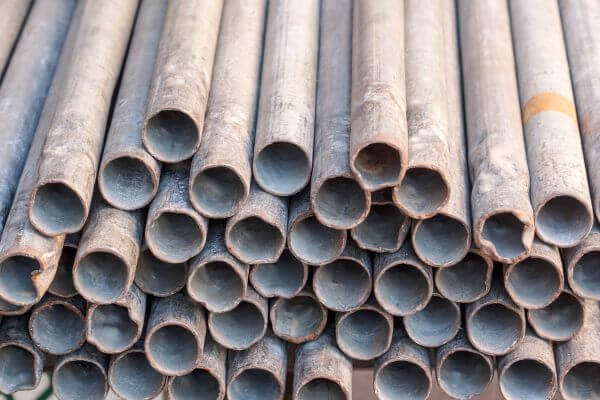Why do old pipes require special maintenance?
Over time, pipes accumulate debris, suffer wear and tear and can deteriorate due to various factors:
- Sediment and limescale build-up: Reduces water flow and can cause blockages.
- Internal corrosion: Materials such as galvanised iron tend to rust, weakening the structure of the pipe.
- Leaks and seepage: Joints and connections can deteriorate, leading to water leaks.
- Mineral incrustations: Especially in areas with hard water, minerals can build up on the walls of pipes.
- Presence of roots: In older installations, tree roots can invade the pipes and block them.
How to keep old pipes in good condition
There are several methods to avoid problems and prolong the life of the installation:
1. Periodic cleaning with pressurised water
The use of pressurised water helps to remove adhering debris inside the pipes without damaging them. Specialised companies can perform this service to keep the water flowing in optimal conditions.
2. Use of environmentally friendly plunger products
Avoid harsh chemicals that can accelerate corrosion. Opt for natural solutions such as baking soda and vinegar or specific biodegradable products.
3. Pipeline camera inspections
Camera inspections can detect hidden problems such as cracks, limescale build-up or encroaching roots.
4. Avoid inappropriate waste disposal
Do not pour oil, food waste or chemicals down the drain. These elements promote clogging and wear and tear in the pipes.
5. Pipe lining with no-build technology
If the pipe is in poor condition but you do not want to do a complete renovation, there is the option of coating the inside with resin to reinforce the structure and prevent leaks.
Main problems in old pipes and how to solve them
1. Frequent blockages
Debris accumulated over time can lead to blockages in the pipe, causing slow drainage and possible overflows.
To solve this problem, it is advisable to clean with pressurised water or hydro-jetting systems. In addition, environmentally friendly products can be used to prevent build-up and to avoid flushing oil, grease and solid objects down the drains.
2. Corrosion and pressure loss
Galvanised iron pipes can suffer from internal rusting, reducing water flow. To prevent this, it is advisable to carry out video camera inspections and to apply internal coatings with epoxy resin. In cases of advanced corrosion, it may be necessary to replace affected sections.
3. Hidden leaks
Leaks can lead to structural damage and increased water bills. To detect them, ultrasound equipment and thermal cameras can be used and, if necessary, repairs can be carried out using internal lining techniques without the need for invasive works.
4. Odours and water pollution
Old pipes can accumulate organic residues and bacteria, generating unpleasant odours and affecting water quality. The solution is to clean with biodegradable products that eliminate bacteria without damaging the pipes and to carry out periodic maintenance with non-corrosive disinfectants.
Benefits of preventive maintenance on old pipes
Regular maintenance has many advantages. Firstly, it avoids costly repairs, as early detection of problems reduces the need for complete replacements. It also increases the durability of the system by preventing corrosion and scaling, prolonging the life of the pipes. Another key benefit is improved water quality, avoiding sediment and debris, and optimising water consumption by detecting leaks early and reducing waste.
Modern methods for cleaning pipes
There are various methods to clean pipes effectively without damaging them. One of the most commonly used is pressure water cleaning, which allows blockages to be removed without the use of aggressive chemicals. Another method is camera inspection, which helps to detect problems without the need for building work. In cases where pipes show internal wear, epoxy resin coating is an effective solution that prolongs their service life without invasive works.
When do the pipes need to be replaced?
While proper maintenance can extend the life of pipes, there are situations where replacement is unavoidable. Some signs that replacement is necessary include severe loss of water pressure, recurring leaks that cannot be sealed with coatings, advanced corrosion with a risk of bursting, and water that is brown or tastes unpleasant.
If you notice any of these problems, consult with plumbing experts to assess whether a partial or total replacement of the installation is necessary.


Recent Comments